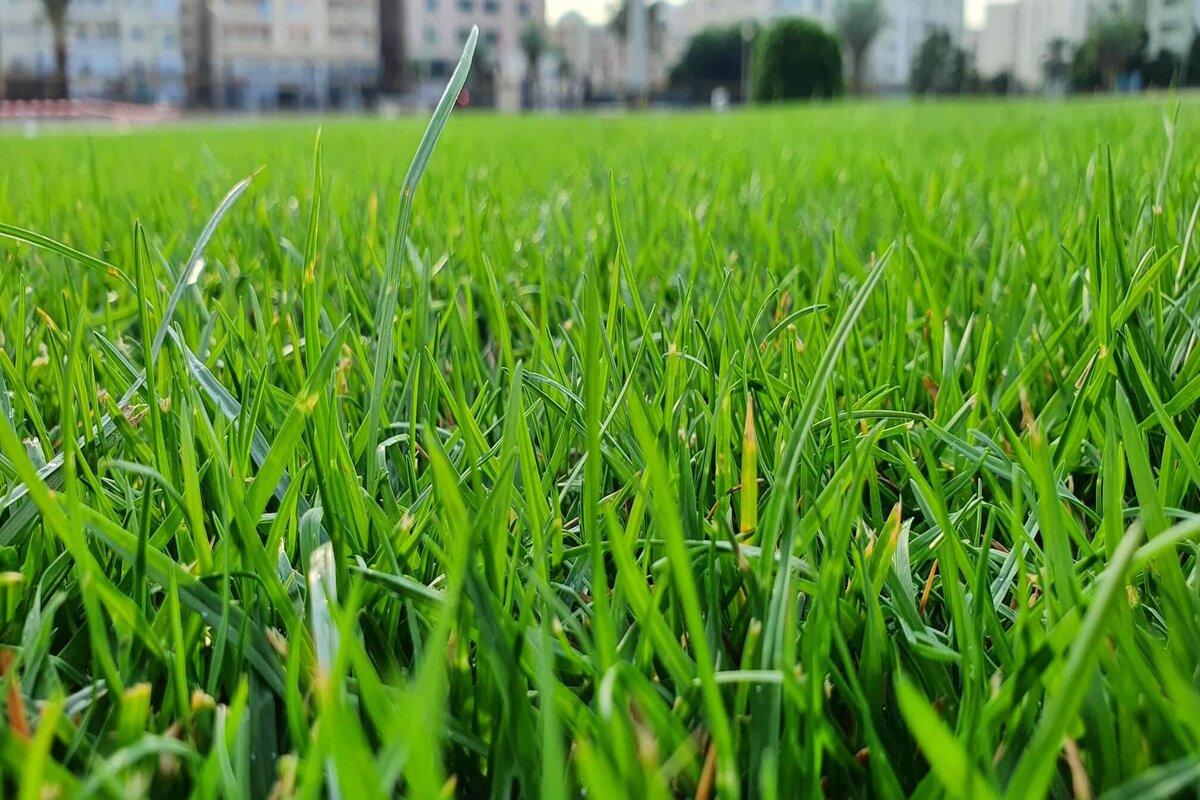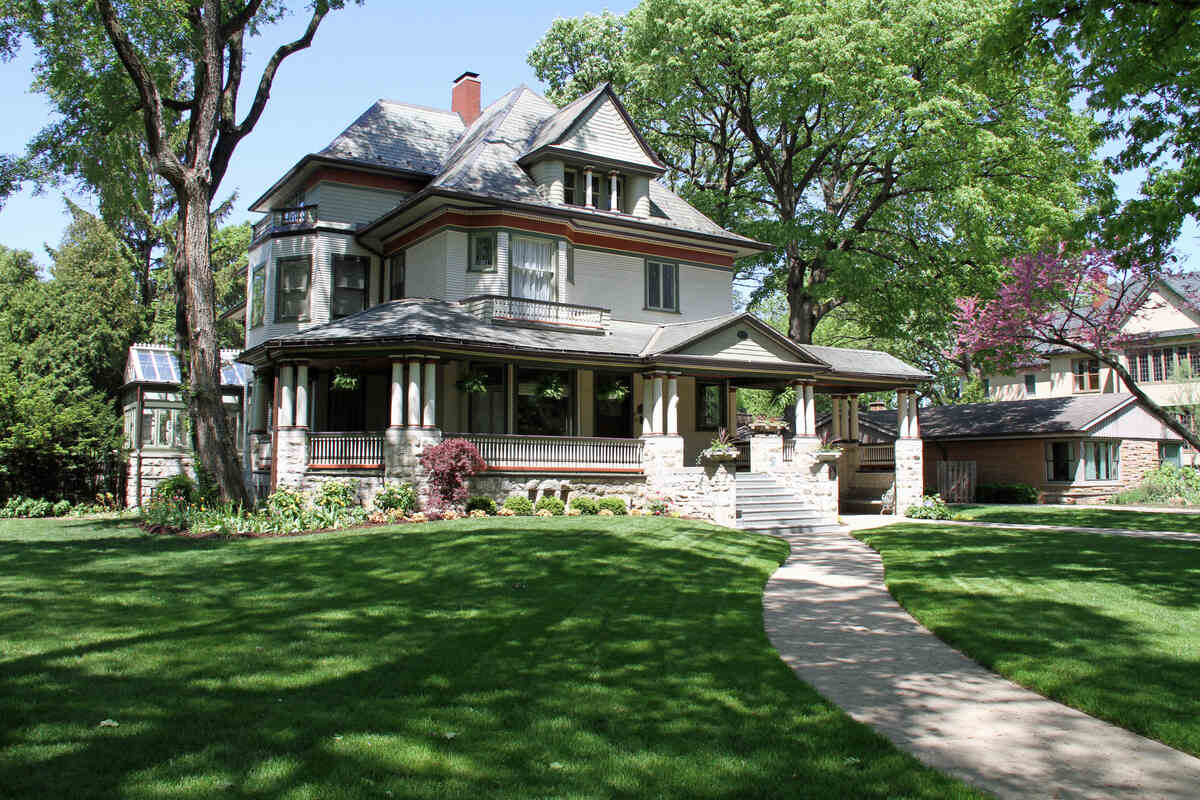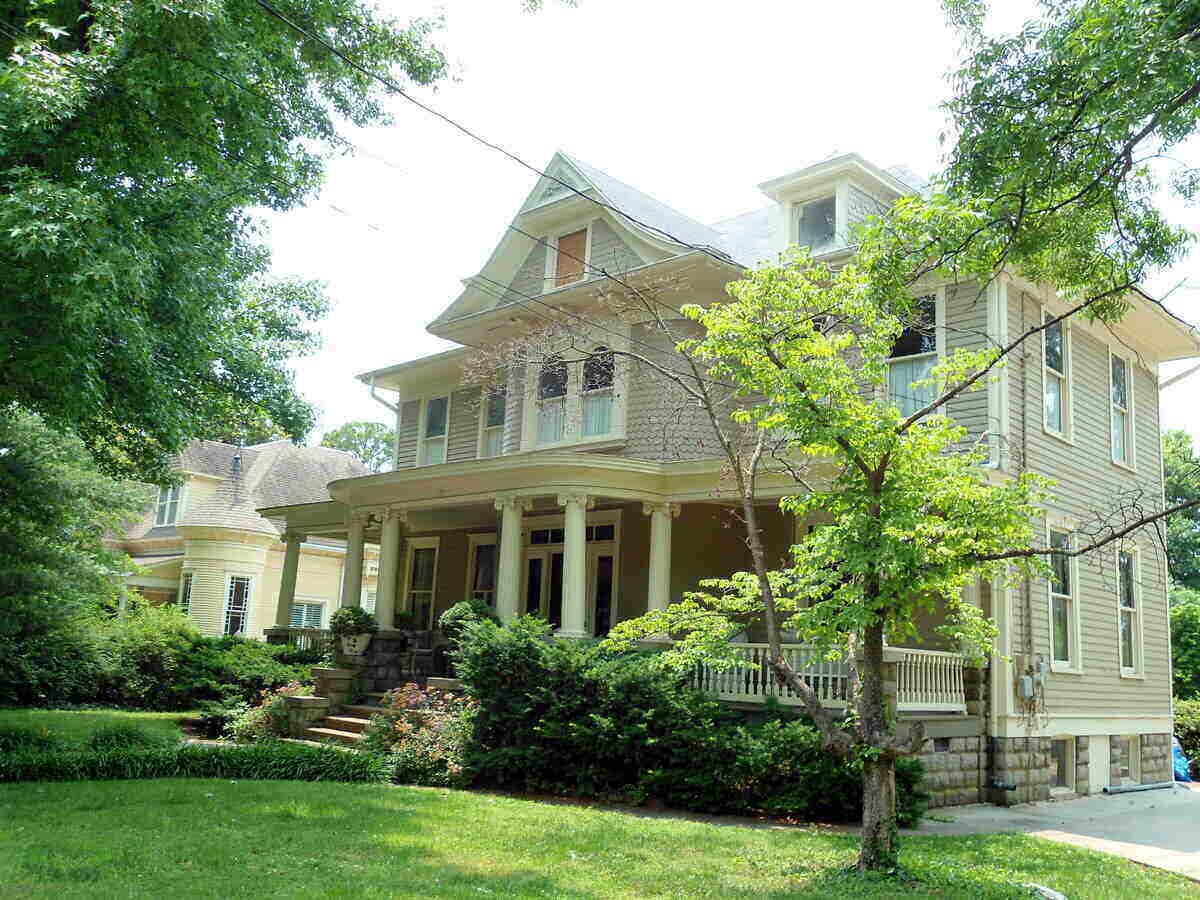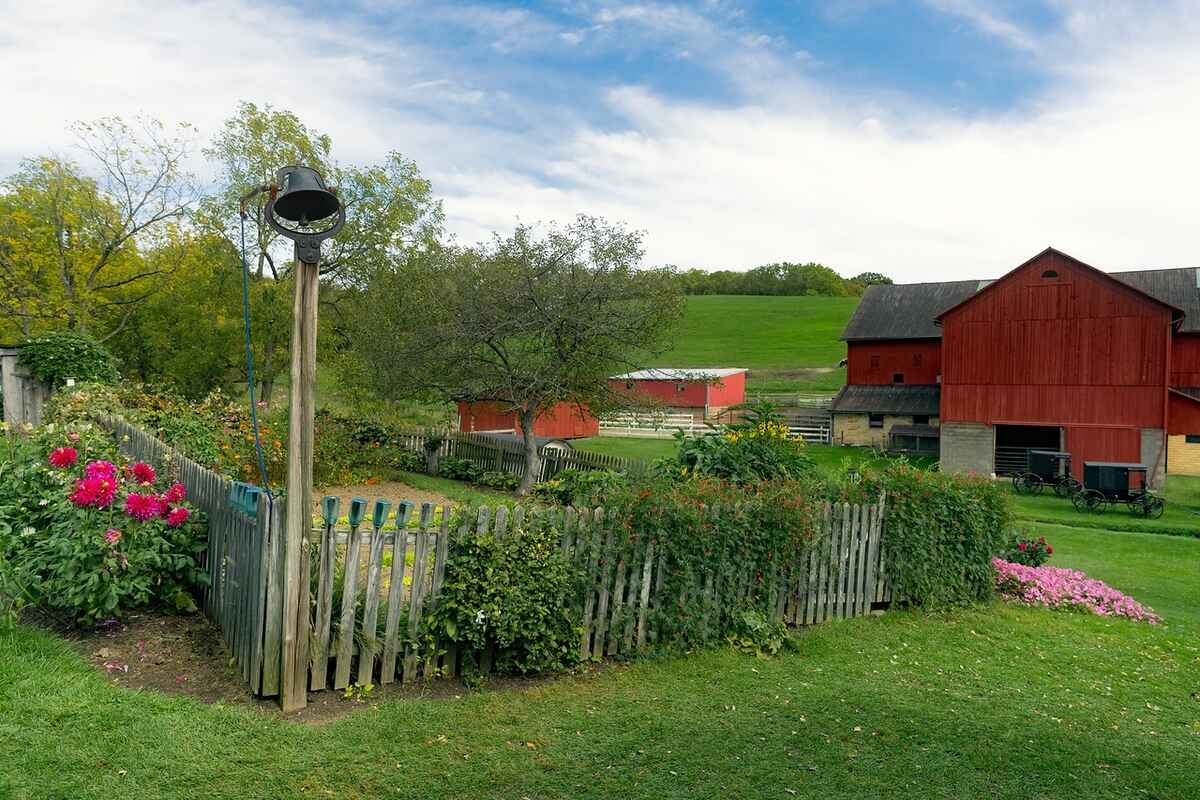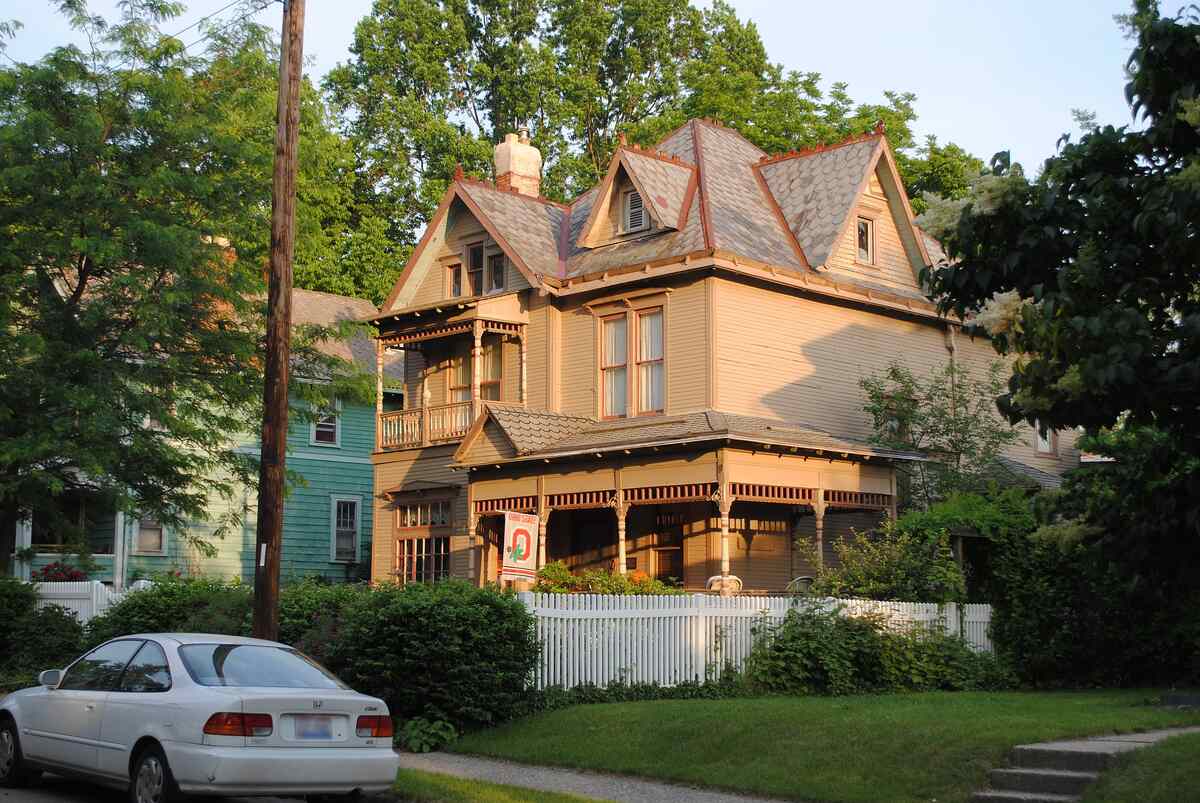
When it comes to selecting a type of grass for a home in Columbus, Ohio, don’t be lulled by the fact that it is near the transition zone. Warm-season grasses don’t do well at all in the ice and cold of a Columbus winter. The four best grass types for Columbus are all cool-season grasses. We’ll show you which species work best in lawns with sun, shade, or a little of both. Let’s begin.
If you’re short on time, skip ahead to our quick decision guide on how to select the best grass type for Columbus, Ohio.
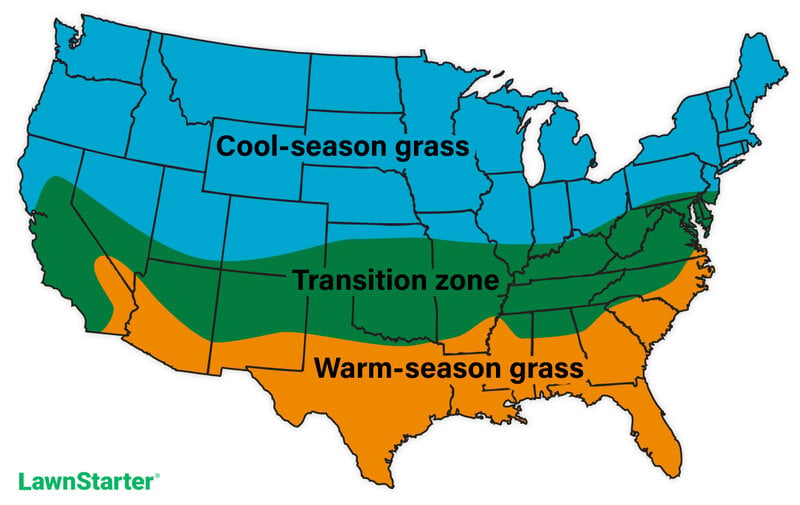
4 Best Grass Types for Columbus
Kentucky Bluegrass

Photo Credit: Joshua Boman / Shutterstock
Don’t be fooled by its name: This deep green-colored grass is widely used throughout the northern United States. Kentucky bluegrass (KBG) is prized for its beauty and ability to recover from stresses like foot or paw traffic. But you’ll need to put in the work to have a resilient KBG lawn. This grass requires you to fertilize, mow, dethatch, and water regularly (see lawn watering tips for Columbus, OH).
Fun Fact: The “blue” in bluegrass comes from flower heads that emerge when the grass is two feet or more in height. Some also say it has a blue-green color.
- Classification: Cool-season grass
- Spreads by: Rhizomes
- Shade tolerance: Low
- Drought tolerance: Moderate
- Foot traffic tolerance: Moderate
- Maintenance needs: Moderate mowing frequency and high fertilization needs.
- Mowing height: Set mowing height between 2.5 and 3.5 inches.
- Potential for disease: Moderate to high; prone to several diseases, such as dollar spot, leaf spot, necrotic ring spot, summer patch, and stripe smut.
- Soil pH: 6-7.5
- Soil type: Performs best in well-drained, heavy soils with high fertility.
Grass Seed Options:
– Jonathan Green (11970) Blue Panther Kentucky Bluegrass Grass Seed (3 lbs.)
– SeedRanch Midnight Kentucky Bluegrass Seed (5 lbs.)
– Jacklin Seed – Biltmore Blue Blend – 100% Kentucky Bluegrass (5 lbs.)
Perennial Ryegrass
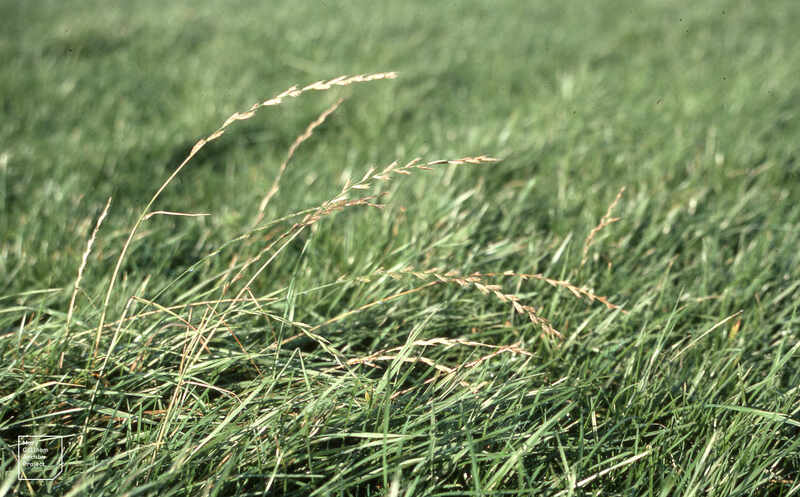
Photo Credit: Dr Mary Gillham Archive Project / Flickr / CC BY 2.0
Perennial ryegrass is an excellent choice for a Columbus lawn. Experts recommend that it be mixed with another type of seed, with Kentucky bluegrass being the partner of choice. Perennial ryegrass is soft to walk on, a luscious emerald green in color, and grows fast. However, it doesn’t tolerate shade or drought well, so plant it in full sun and keep it watered in summer.
- Classification: Cool-season grass
- Spreads by: Has a bunch-type growth habit
- Shade tolerance: Low
- Drought tolerance: Low
- Foot traffic tolerance: High
- Maintenance needs: Moderate mowing and fertilization requirements. Thatch is not significant.
- Mowing height: Set mowing height to 1.5 to 2.5 inches
- Potential for disease: High. Common diseases include gray leaf spot, red thread, and leaf spot/melting-out.
- Soil pH: Can grow in soils with a pH between 5 and 8, but prefers between 6 and 7.
- Soil type: Prefers good drainage and fertility, but can tolerate some poor drainage.
Grass Seed Options:
– Outsidepride Perennial Ryegrass Seed (5 lbs.)
– Eretz ProTurf Perennial Ryegrass Fine Lawn Seed (choose your size)
Tall Fescue

Aaron J. Patton, Ph.D. / Turfgrass Extension Specialist at Purdue University
Once known as a “wonder grass,” tall fescue grows in all the types of soil found in Columbus, and is remarkably low maintenance. However, it doesn’t recover from damage well, so it might not be the right choice if you intend to let the kids play in it or to hold parties on it.
Even if you don’t have much foot or paw damage at summer’s end, you may have bare spots due to other summer stresses. The solution to summer wear? It’s easy: Overseed in the fall.
- Classification: Cool-season grass
- Spreads by: Produces short rhizomes but has a bunch-type growth habit
- Shade tolerance: Moderate
- Drought tolerance: Moderate to High
- Foot traffic tolerance: Moderate
- Maintenance needs: Frequent mowing. Does not produce significant thatch.
- Mowing height: Set mowing height to 2 inches when grass reaches 3 inches tall.
- Potential for disease: Tolerant of most diseases when properly maintained.
- Soil pH: 5.5-6.5
- Soil type: Adapted to a wide range of soil conditions, but prefers fertile clay soils with good drainage.
Pro Tip: Choose turf-type tall fescue for the best results in a home lawn.
Grass Seed Options:
– Triple-Play Tall Fescue Grass Seed Blend (5000 sq ft)
– Eretz Kentucky 31 K31 Tall Fescue Grass Seed (choose your size)
– Pennington The Rebels Tall Fescue Grass Seed Mix (7 lb.)
Fine Fescue
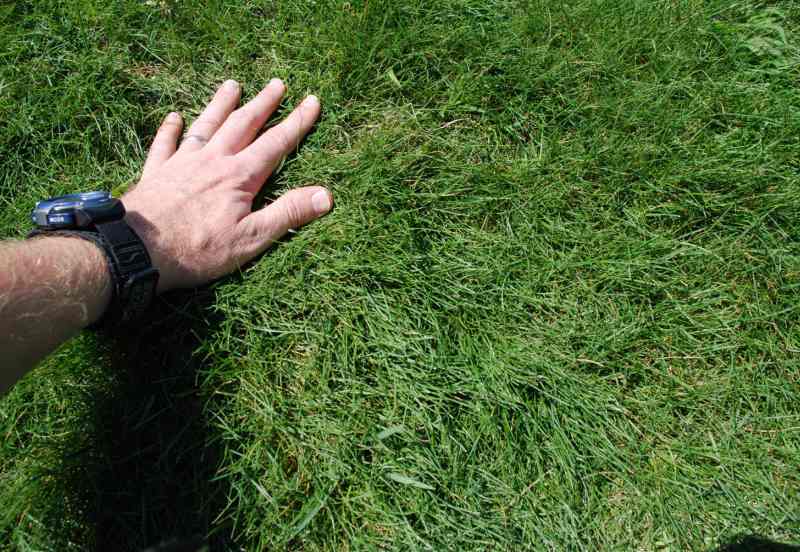
Aaron J. Patton, Ph.D. / Turfgrass Extension Specialist at Purdue University
Named for its narrower leaf blades, the fine fescues do well in the shade and drought. This group of grasses are often included in a mix with Kentucky bluegrass for lawns with sun and shade. If planted on their own, they are not a grass to let the kids play on as they don’t tolerate foot traffic. But in a mix with KBG, moderate traffic shouldn’t be an issue.
“Fine fescues” usually refer to:
- Strong creeping red fescue
- Slender creeping red fescue
- Chewings fescue
- Hard fescue
- Sheep fescue
There are other fine fescues, but they are seldom recommended for lawns, so stay away from these:
- Blue fescue
- Fine-leaf sheep fescue
- Shade fescue
- Bluebunch fescue
- Molate fescue
Classification: Cool-season grass
Spreads by: Creeping red fescue spreads by rhizomes, while other fine fescues are bunch-type grasses, such as Chewings, hard, and sheep fescues.
Shade tolerance: Moderate to High, depending on species
Drought tolerance: Moderate to High, depending on species
Foot traffic tolerance: Low to Moderate, depending on species
Maintenance needs: Low fertilizer and mowing needs
Mowing height: Set mowing height between 2.5 and 4 inches, depending on species.
Potential for disease: Moderate. Common diseases include red thread, leaf spot, dollar spot, summer patch, and powdery mildew.
Soil pH: 6-6.5
Soil type: Will not perform well in wet soil conditions. Prefers drier soils and tolerates a wide range of soil types and fertility.
Grass Seed Options:
– Outsidepride Legacy Fine Fescue Grass Seed (5 lbs.)
– Eretz Creeping Red Fine Fescue Seed (choose your size)
– Outsidepride Creeping Red Fine Fescue Grass Seed (25 lbs.)
– Outsidepride Hard Fine Fescue Grass Seed (10 lbs.)
Consider Mixing Your Grasses
For lawns in Columbus and throughout Ohio, the Ohio State University recommends that you use a mixture of seeds:
- Kentucky Bluegrass and Perennial Ryegrass. Use 90 to 95 percent Kentucky bluegrass.
- Kentucky Bluegrass and Fine Fescue. Use no more than 50 percent Kentucky bluegrass, and as little as 30 percent.
- Kentucky Bluegrass, Fine Fescue, and Perennial Ryegrass. Use 45 to 60 percent Kentucky bluegrass, 30 to 50 percent fine fescue, and the rest perennial ryegrass.
Cultivars and the Process of ‘Blending’
Cultivars are varieties of plants that were cultivated in the name of science. Each type of grass has cultivars, with Kentucky bluegrass, perennial ryegrass, tall fescue, and fine fescues having dozens each. Cultivars are created to emphasize different needs, such as making a grass better in the shade, and in breeding strong grass options for Ohio.
If you decide to use one type of grass for your lawn, you should think in terms of “blending” cultivars. “Blending” is the term used when you use more than one cultivar of the same species. If you used two or more types of grass (say, Kentucky bluegrass and perennial ryegrass), you are “mixing.”
Yes, it is routine to have both “blending” and “mixing” in your lawn.
A pro’s tip: Seed must identify the type of grass and any cultivars above five percent, under the Federal Seed Act. There must also be the germination percentage, weed quantity, and inert material proportion. Use the information in making your decision. More than that: If the information isn’t present, you should be wary of fraud (so don’t buy it, right?).
Cool-Season Growing Seasons
The best grasses to grow in Columbus, as well as the rest of Ohio, are the cool-season grasses. Although they have two growing seasons, spring and fall, most of your lawn care will come in the fall (overseeding, aeration, dethatching, and fertilizing).
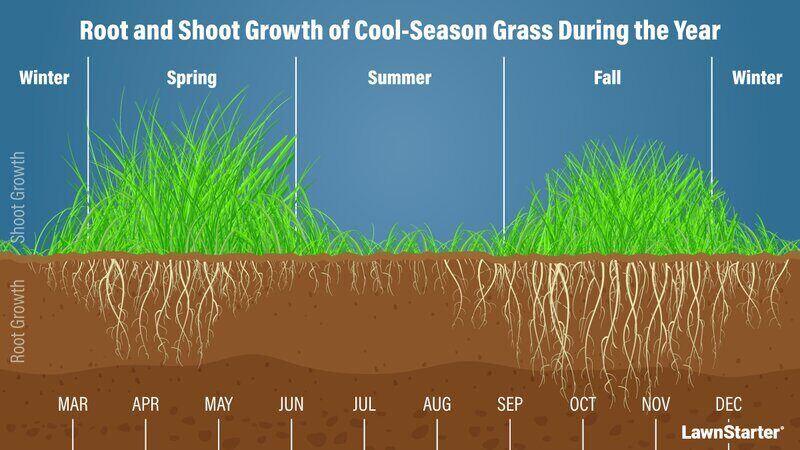
Cost to Seed or Sod a Lawn
A LawnStarter study found the cost to seed your lawn is between $0.10 and $0.19 per square foot (materials and labor). The average price for a job:
| National average cost | $1,085 |
| Typical price range | $680-$1,815 |
| Extreme low-end cost | $195 |
| Extreme high-end coast | $2,960 |
A further LawnStarter survey reviewed the cost of having sod installed as new grass:
- Sod alone (no labor) costs $0.30 to $0.83 per square foot.
- Labor from a service will run from $0.57 to $0.93 per square foot to install the sod.
- In total, it costs $0.87 to $1.76 per square foot for both labor and materials.
How to Select the Best Grass Type for Columbus, Ohio
Can the Lawn Be Used?
The kids can run wild on it: Perennial ryegrass
You can use it: Kentucky bluegrass, tall fescue
You can walk across it: Fine fescue
How Often Does It Need Mowing?
It’s a mistake to take a week off: Tall fescue
It doesn’t grow that fast: Kentucky bluegrass, perennial ryegrass
The growth is slow: Fine fescue
What Are the Maintenance Needs?
It can’t be ignored: Kentucky bluegrass
It is reasonable: Perennial ryegrass, tall fescue
For a low-maintenance lawn: Fine fescue
What if it is in the Shade?
Does fine under the trees: Fine fescue
It should be fine, but check it: Tall fescue
Not made for the shade: Kentucky bluegrass, perennial ryegrass
Droughts Do Hit the Columbus Area …
Grass that should survive: Fine fescue, tall fescue
Grass that might be OK: Kentucky bluegrass
Needs water: Perennial ryegrass
Might It Attract Diseases?
It happens a lot: Perennial ryegrass
Be aware of the signs: Kentucky bluegrass
Should be fine: Fine fescue
You shouldn’t have to worry: Tall fescue
A Call to Action
Lawn care can be a rewarding do-it-yourself project, but remember, it is demanding and time consuming. You should look into the choices, then make your decision on how to proceed. If you decide to hire a professional service, a LawnStarter pro in Columbus, Ohio, can help.
LawnStarter participates in the Amazon Services LLC Associates Program, an affiliate advertising program. LawnStarter earns revenue from products promoted in this article.
Main Image Credit: Wdzinc / Wikimedia Commons / CC BY-SA 3.0
